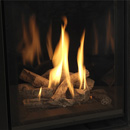
First year students soon to be moving into university the new term by now and many are most likely adapting to independent living in rented accommodation for the very first time.
Without putting a dampener to all their new-found freedoms, it is imperative they understand the dangers that can occur from faulty or badly-installed appliances.
Carbon monoxide (CO) is a potentially lethal gas which cannot be detected by the senses. It is a product of the combustion of organic matter under conditions of restricted oxygen supply, which prevents complete oxidation to carbon dioxide (CO2).
Each year in the UK, people die from acute CO poisoning caused by emissions from gas heaters. Many more suffer the symptoms of chronic poisoning including headaches, sickness and chest pains, which are easily misdiagnosed.
According to the Health & Safety Executive (HSE), last year 15 people died and 234 suffered major injuries from CO poisoning caused by gas appliances.
Prevention remains a vital public health issue, requiring public education on the safe operation of these appliances.
Common sources of carbon monoxide in the home include faulty central heating systems, gas appliances and fires. Blocked flues and chimneys mean the gas can’t escape and is inhaled by the unsuspecting individual.
 Carbon monoxide poisoning is preventable, so it’s important to be aware of possible causes and how to minimise the risk of exposure by putting these safety tips into practice:
Carbon monoxide poisoning is preventable, so it’s important to be aware of possible causes and how to minimise the risk of exposure by putting these safety tips into practice:
• Have any chimneys and flues checked regularly
• Make sure gas appliances and heating systems are inspected every year
• Fit audible carbon monoxide alarms – available from DIY stores
• Never run cars, motorbikes or lawnmowers in a closed garage.
People can prevent serious consequences by learning to spot the warning signs. CO poisoning may be a possibility if other people in the same home are suffering similar symptoms, or if they tend to disappear when a person goes away (for example on holiday).
Symptoms can also be seasonal (for example, people suffering from headaches during the winter when indoor heating is used more often).
Students, as well as many other vulnerable groups living in rented accommodation, must make sure their landlord has any gas appliance regularly maintained by a Gas Safe Register engineer and issue the tenant with a copy of the gas safety record following the annual safety check.
Young people can also ensure that they are protecting themselves by installing an audible carbon monoxide alarm. If it is a battery-operated device then they will need to test that the battery is working on a regular basis, just as you would with a smoke alarm.
Recently, there have been incidents where parents have found their children dead due to badly-installed appliances and a lack of understanding that not all installers are trained to fit all appliances.
Competent Gas Safe Registered installers must help to inform members of the public of the risks so that parents, offspring and their wider network of family and friends can be more aware of the dangers. The more people this message gets through to, the more lives will be saved.
In reality, gas safety may not be high on the list of importance for students when they move into their new home. But being clued up when they rent accommodation, and understanding their rights as tenants, could save their lives. According to Gas Safe Register, in April 2007, six Oxford University students narrowly escaped death as a potentially deadly CO leak was discovered in their student accommodation.
When the emergency services arrived, they found exceptionally high levels of the deadly gas in the property. Had it not been for their parent’s encouragement to fit an audible CO alarm in the house, these students could have lost their lives.
The alarm signalled, warning them of high levels of CO leaking from a gas cooker.
If a landlord refuses to service and safety check the gas appliances they have provided, they are breaking the law and the individual can ring the HSE and report them on 0845 345 0055.
CO poisoning can be fatal depending on the concentration inhaled, and can be confirmed by finding high levels in the blood.
Treatment includes making sure the patient is away from any source of the gas, providing basic life support as appropriate and giving oxygen before transferring the patient to hospital.
People who suffer mild poisoning invariably make a full recovery, but between 10 and 50% of those who are exposed to severe poisoning may suffer long-term problems.
There have been many TV campaigns highlighting the importance of installing a fire alarm, but not so many regarding CO alarms.
Gas Safe Register is the official body for gas safety in the United Kingdom, Isle of Man and Guernsey, and continues to campaign to raise awareness of the dangers of using illegal installers – those who are not registered with Gas Safe.
Those who are registered can highlight the dangers by imparting knowledge to a customer who may well pass this information forward to another person – with an outcome of a life being saved.
 Among these are their latest range of inset electric fires such as the iona and bailey, these boast an ultra slim inset depth of just 18mm!! Meaning these electric fires can be fitted into a surround on a flat wall with just a standard 25mm rebate...Amazing.
Among these are their latest range of inset electric fires such as the iona and bailey, these boast an ultra slim inset depth of just 18mm!! Meaning these electric fires can be fitted into a surround on a flat wall with just a standard 25mm rebate...Amazing. Flamerite has also released the Payton Suite, this easy to install Portuguese Stone Effect suite is available floor standing or wall mounted without requiring any inset depth. Also boasting the LED Solar Flare effect that will last approximately 40,000 hours of non-stop running. To put that in persepective, you could purchase this fire, plug it in and turn it on and leave it for nearly four and a half years of constant operation before the LED lights give up the ghost. And because they're LED's the cost for running if for some 40,000 hours would only cost you £31.20 on average...Bargain!
Flamerite has also released the Payton Suite, this easy to install Portuguese Stone Effect suite is available floor standing or wall mounted without requiring any inset depth. Also boasting the LED Solar Flare effect that will last approximately 40,000 hours of non-stop running. To put that in persepective, you could purchase this fire, plug it in and turn it on and leave it for nearly four and a half years of constant operation before the LED lights give up the ghost. And because they're LED's the cost for running if for some 40,000 hours would only cost you £31.20 on average...Bargain!






















 Carbon monoxide poisoning is preventable, so it’s important to be aware of possible causes and how to minimise the risk of exposure by putting these safety tips into practice:
Carbon monoxide poisoning is preventable, so it’s important to be aware of possible causes and how to minimise the risk of exposure by putting these safety tips into practice:




